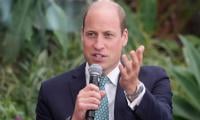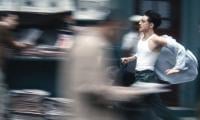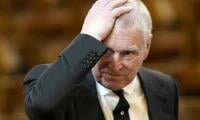Prayer and health
Part - IIRandom thoughtsToday more about the physical benefits of prayer after last week’s introduction to the topic. Medical science acknowledges the importance of posture for general wellbeing and many problems arise when this is lacking. Let us view namaz in this light. During namaz, it is essential that all
By Dr A Q Khan
June 22, 2015
Part - II
Random thoughts
Today more about the physical benefits of prayer after last week’s introduction to the topic. Medical science acknowledges the importance of posture for general wellbeing and many problems arise when this is lacking.
Let us view namaz in this light. During namaz, it is essential that all movements must be well balanced, slow, natural and rhythmic (Taadel-e-Arkan), thus affecting circulatory, nervous and other systems. After performing wuzu, the devotee stands facing the Kaaba and in total submission to Allah while proclaiming his/her intention for this particular prayer (Niyyat).
At the start of the prayer, the devotee raises both hands to the ears with open palms. While doing this, he/she should stand upright with shoulders straight and drawn back while the abdomen muscles should be held in and tightened, thus aiding muscular tone. (A pot belly is a documented coronary risk factor). The weight of the body should be distributed evenly between both legs and feet.
The eyes, during this time, are fixed on the spot of prostration (Sajda). This is the first posture called ‘Quayam’. The meditative influence of the various body systems is quite substantial while reciting verses from the Holy Quran, those very verses that were communicated to our Holy Prophet (pbuh).
Dwelling on this thought can bring with it a sense of tranquillity, peace, serenity and comfort through the release of endorphins from the brain. Prayers of longer duration, such as night vigils, Tahajjud and Traweeh during Ramzan, have real benefits on various body systems. These can be summarised as follows: a) body and mind are relaxed and the weight is evenly divided between the two legs; b) the backbone is straight; c) breathing becomes natural and invigorating; d) concentration is facilitated by being focused on ‘Sajda’.
The second position (Rukoo) involves bowing down and gripping the knees with hands splayed. The legs should be straight and the body bent at a right angle from the waist. The back should be so straight that something can be balanced on it. The influence of this position is: a) blood flows to the upper half of the body; b) flatulence (gastro-intestinal bloating) is eliminated; c) excess fat from the belly is released; d) the spine becomes strong and flexible; e) effective treatment for chronic constipation; f) toning of calf, thigh and abdominal muscles.
The third position resembles the first, but this time the arms are kept straight along the body. It assists in a) allowing blood flow back to normal throughout the body; b) relaxing the body as it is evenly balanced; c) keeps the back in its normal position to boost nourishment; d) tightens abdominal muscles.
The fourth position (Sajda) has been esteemed throughout the ages as being the posture of total subservience and surrender. It helps in deriving all the benefits of namaz simultaneously. It consists of bending down, kneeling and finally touching the ground in such a manner that the forehead, nose, both hands (with outstretched fingers), knees and toes are in contact with the janamaz. This posture assists the flow of blood to the brain and upper half of the body, including eyes, ears, nose and lungs and helps in cardiac disease control. This position can be comfortably maintained by everyone provided there are no health restrictions/limitations.
The fifth position (Jalsa) is where the namazi sits on his left leg and foot, keeping the right leg bent and resting on the toes. The head and back should be in a straight line. The benefits are: a) flowing back of the blood after Sajda; b) relaxation of the body, including the spine; c) helps indigestion and constipation and is beneficial in cases of peptic ulcers and stomach ailments ; d) stimulated circulation in the nerves and muscles of the thighs.
The sixth position is the same as the fourth. The repetition of the same posture within a few seconds produces a beneficial effect on the respiratory, circulatory and nervous systems.
The seventh and last phase of namaz is a repetition of the fourth and sixth positions and then reverting to sitting posture (as in the fifth position). It is again transient and involves sitting in such a manner that the body rests on the toes. The action of getting down and getting up puts weight on the backbone, thighs, knees and calf muscles and regular and daily repetitions increases their strength, thus preventing backache and degenerative diseases of the joints like osteoarthritis.
All seven postures are performed in accordance with the instructions ordained by our Holy Prophet (pbuh). While performing namaz, the eyes should preferably be focused on the spot where the forehead will touch the ground. The devotee should continuously try to concentrate on the meaning of the holy words being spoken by the person leading the prayers or being recited by him/herself while praying alone. Once true concentration is achieved, one gets the feeling either that they are beholding the Almighty, or that the Almighty is seeing them personally. The eyes are portals to the brain. Focusing on a fixed point prevents mental input and gives a sense of purpose and relaxation.
The benevolence of large congregations for prayer, irrespective of the social status of the devotee, is of great significance as it fosters the knowledge that all human being are equal in the eyes of Allah Almighty. It also creates a feeling of mutual brotherhood and cooperation.
If prayer is offered with true spiritual devotion and concentration, it bears fruit in the form of moral enrichment. True communion with the Almighty is only possible through prayer and only if the devotee truly desires His benevolence and puts him/herself at His command. If you manage to offer prayer in this manner, and it is not at all difficult to do so, even breathing and concentration cannot be broken and the highest benefits will be obtained.
Regular prayer at the required times five times a day invokes a certain discipline. Midday prayers are usually performed after lunch. The light exercise that is part of prayer following after a meal will encourage eating less. Praying with the proper postures, particularly the Rukoo and Sajda, becomes difficult on an overly full stomach. Furthermore, small meals followed by light exercise, as in prayer, prevents pot bellies – a known coronary risk.
These are some of the many benefits of prayer on health, both physical and mental. There are more, but these are beyond the scope of the column. May Almighty Allah shower His Blessings on all Muslims – Ameen.
Concluded
Email: dr.a.quadeer.khan@gmail.com
Random thoughts
Today more about the physical benefits of prayer after last week’s introduction to the topic. Medical science acknowledges the importance of posture for general wellbeing and many problems arise when this is lacking.
Let us view namaz in this light. During namaz, it is essential that all movements must be well balanced, slow, natural and rhythmic (Taadel-e-Arkan), thus affecting circulatory, nervous and other systems. After performing wuzu, the devotee stands facing the Kaaba and in total submission to Allah while proclaiming his/her intention for this particular prayer (Niyyat).
At the start of the prayer, the devotee raises both hands to the ears with open palms. While doing this, he/she should stand upright with shoulders straight and drawn back while the abdomen muscles should be held in and tightened, thus aiding muscular tone. (A pot belly is a documented coronary risk factor). The weight of the body should be distributed evenly between both legs and feet.
The eyes, during this time, are fixed on the spot of prostration (Sajda). This is the first posture called ‘Quayam’. The meditative influence of the various body systems is quite substantial while reciting verses from the Holy Quran, those very verses that were communicated to our Holy Prophet (pbuh).
Dwelling on this thought can bring with it a sense of tranquillity, peace, serenity and comfort through the release of endorphins from the brain. Prayers of longer duration, such as night vigils, Tahajjud and Traweeh during Ramzan, have real benefits on various body systems. These can be summarised as follows: a) body and mind are relaxed and the weight is evenly divided between the two legs; b) the backbone is straight; c) breathing becomes natural and invigorating; d) concentration is facilitated by being focused on ‘Sajda’.
The second position (Rukoo) involves bowing down and gripping the knees with hands splayed. The legs should be straight and the body bent at a right angle from the waist. The back should be so straight that something can be balanced on it. The influence of this position is: a) blood flows to the upper half of the body; b) flatulence (gastro-intestinal bloating) is eliminated; c) excess fat from the belly is released; d) the spine becomes strong and flexible; e) effective treatment for chronic constipation; f) toning of calf, thigh and abdominal muscles.
The third position resembles the first, but this time the arms are kept straight along the body. It assists in a) allowing blood flow back to normal throughout the body; b) relaxing the body as it is evenly balanced; c) keeps the back in its normal position to boost nourishment; d) tightens abdominal muscles.
The fourth position (Sajda) has been esteemed throughout the ages as being the posture of total subservience and surrender. It helps in deriving all the benefits of namaz simultaneously. It consists of bending down, kneeling and finally touching the ground in such a manner that the forehead, nose, both hands (with outstretched fingers), knees and toes are in contact with the janamaz. This posture assists the flow of blood to the brain and upper half of the body, including eyes, ears, nose and lungs and helps in cardiac disease control. This position can be comfortably maintained by everyone provided there are no health restrictions/limitations.
The fifth position (Jalsa) is where the namazi sits on his left leg and foot, keeping the right leg bent and resting on the toes. The head and back should be in a straight line. The benefits are: a) flowing back of the blood after Sajda; b) relaxation of the body, including the spine; c) helps indigestion and constipation and is beneficial in cases of peptic ulcers and stomach ailments ; d) stimulated circulation in the nerves and muscles of the thighs.
The sixth position is the same as the fourth. The repetition of the same posture within a few seconds produces a beneficial effect on the respiratory, circulatory and nervous systems.
The seventh and last phase of namaz is a repetition of the fourth and sixth positions and then reverting to sitting posture (as in the fifth position). It is again transient and involves sitting in such a manner that the body rests on the toes. The action of getting down and getting up puts weight on the backbone, thighs, knees and calf muscles and regular and daily repetitions increases their strength, thus preventing backache and degenerative diseases of the joints like osteoarthritis.
All seven postures are performed in accordance with the instructions ordained by our Holy Prophet (pbuh). While performing namaz, the eyes should preferably be focused on the spot where the forehead will touch the ground. The devotee should continuously try to concentrate on the meaning of the holy words being spoken by the person leading the prayers or being recited by him/herself while praying alone. Once true concentration is achieved, one gets the feeling either that they are beholding the Almighty, or that the Almighty is seeing them personally. The eyes are portals to the brain. Focusing on a fixed point prevents mental input and gives a sense of purpose and relaxation.
The benevolence of large congregations for prayer, irrespective of the social status of the devotee, is of great significance as it fosters the knowledge that all human being are equal in the eyes of Allah Almighty. It also creates a feeling of mutual brotherhood and cooperation.
If prayer is offered with true spiritual devotion and concentration, it bears fruit in the form of moral enrichment. True communion with the Almighty is only possible through prayer and only if the devotee truly desires His benevolence and puts him/herself at His command. If you manage to offer prayer in this manner, and it is not at all difficult to do so, even breathing and concentration cannot be broken and the highest benefits will be obtained.
Regular prayer at the required times five times a day invokes a certain discipline. Midday prayers are usually performed after lunch. The light exercise that is part of prayer following after a meal will encourage eating less. Praying with the proper postures, particularly the Rukoo and Sajda, becomes difficult on an overly full stomach. Furthermore, small meals followed by light exercise, as in prayer, prevents pot bellies – a known coronary risk.
These are some of the many benefits of prayer on health, both physical and mental. There are more, but these are beyond the scope of the column. May Almighty Allah shower His Blessings on all Muslims – Ameen.
Concluded
Email: dr.a.quadeer.khan@gmail.com
-
 Spotify Introduces New Monthly Subscription Pricing Plan For 2026
Spotify Introduces New Monthly Subscription Pricing Plan For 2026 -
 Shocking Prediction About Meghan Markle's Career In 2026
Shocking Prediction About Meghan Markle's Career In 2026 -
 Kate Middleton Hosts Reception In London As Prince William Out On Engagement
Kate Middleton Hosts Reception In London As Prince William Out On Engagement -
 Mel C Teases 'precious' Future Plans
Mel C Teases 'precious' Future Plans -
 Teyana Taylor On Julia Roberts Telling Her To 'eat A Sandwich' At Golden Globes: 'Started Crying'
Teyana Taylor On Julia Roberts Telling Her To 'eat A Sandwich' At Golden Globes: 'Started Crying' -
 Minneapolis: ICE Officer Fires Bullet After Migrant Attacks With A Shovel
Minneapolis: ICE Officer Fires Bullet After Migrant Attacks With A Shovel -
 Prince William Gets 'mobbed' By Animals During Rural Engagement
Prince William Gets 'mobbed' By Animals During Rural Engagement -
 Angelina Jolie Finally Escaping L.A.?
Angelina Jolie Finally Escaping L.A.? -
 Matthew McConaughey Takes Legal Action To Save THIS Iconic Phrase From AI Misuse
Matthew McConaughey Takes Legal Action To Save THIS Iconic Phrase From AI Misuse -
 Jodie Foster Reflects On Harsh Reality Of Why She Escaped Sexual Abuse As Actress
Jodie Foster Reflects On Harsh Reality Of Why She Escaped Sexual Abuse As Actress -
 Prince Harry, Meghan Markle To Have Baby In 2026?
Prince Harry, Meghan Markle To Have Baby In 2026? -
 Bella Hadid Steals The Spotlight At 'The Beauty' Premiere
Bella Hadid Steals The Spotlight At 'The Beauty' Premiere -
 Taylor Swift 'worst Photos': Singer's Not-so-perfect Moments Spark Debate
Taylor Swift 'worst Photos': Singer's Not-so-perfect Moments Spark Debate -
 Arizona Mother Traces Missing Son Living In Neighbour’s Home After Killing Hm
Arizona Mother Traces Missing Son Living In Neighbour’s Home After Killing Hm -
 OpenAI Launches ChatGPT Translate To Rival Google Translate
OpenAI Launches ChatGPT Translate To Rival Google Translate -
 Top AI Themes Poised To Shape 2026: Here’s How
Top AI Themes Poised To Shape 2026: Here’s How



